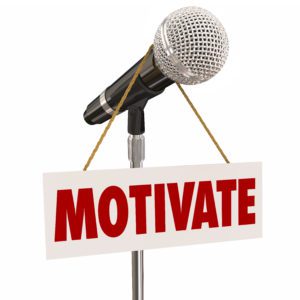‘Slip, Slop, Slap’: How to Use Figures of Speech for More Persuasive Writing
Launched in 1981, one of Australia’s most successful advertising campaigns has changed people’s attitudes towards sun exposure and reduced the two most common forms of skin cancer. The slogan Slip, Slop, Slap was at the centre of the campaign, promoting safety in the sun by slipping on a shirt, slopping on some sunscreen and slapping on a hat. This successful advertising campaign offers important lessons for public speakers, advertisers and anyone who wants to persuade and have their messages remembered.
At the time the campaign was created, melanoma rates were increasing in Australia. The Anti-Cancer Council of Victoria – now Cancer Council Victoria – was looking for a way to make an impact. They approached Philip Adams – the ABC broadcaster who was then a creative director at an ad agency – to develop an advertising campaign that would promote protection against the damaging effects of the sun. (You can watch the original video here.)
The effectiveness of the Slip, Slop, Slap slogan is a result of using three figures of speech — alliteration, onomatopoeia and tricolon — in the slogan.
Alliteration
Alliteration is a figure of speech where initial consonant letters, or sounds, are repeated in at least two different words in successive sentences, clauses, or phrases. This can occur in adjacent words or these that are separated by other words.
This figure of speech has been used since ancient times in poems, stories, speeches and more.
A well-known example of alliteration is ‘Peter Piper picked a peck of pickled peppers’.
This figure of speech is also found in poetry. Here’s an example from The Raven by Edgar Allan Poe:
Deep into that darkness peering, long I stood there wondering, fearing, Doubting, dreaming dreams no mortal ever dared to dream before.
The technique has also been used by speakers to capture attention and be more memorable.
Looking back, through the vista of years of trial, tribulation, and turmoil, into that Valley of the Shadow of Death, into which we and all free peoples of the earth were plunged, we may now lift up our voices, and thank God that, through their sacrifice, we have been brought safely into the green pastures of peace. – William ‘Billy Hughes’, Australian Federal Parliament, September 1919
Finally, whether you are citizens of America or citizens of the world, ask of us here the same high standards of strength and sacrifice which we ask of you. With a good conscience our only sure reward, with history the final judge of our deeds, let us go forth to lead the land we love, asking His blessing and His help, but knowing that here on earth God’s work must truly be our own. – John F Kennedy, Inaugural Address, January 1961
Advertisers understand the power of alliteration and use it in slogans and names:
Functional… Fashionable… Formidable… – Fila
Greyhound going great. – Greyhound
Don’t dream it. Drive it. – Jaguar
Krispy Kreme
Weight Watchers
Banana Boat
Tetley Tea
Range Rover
Coca-Cola
It’s no coincidence that alliteration is used in some of the most memorable poems, speeches, advertising campaigns and business names.
Onomatopoeia
Onomatopoeia is the term that describes a word that phonetically imitates, resembles or suggests the source of the sound that it describes. Examples include:
- splash, sprinkle and squirt — for water descriptions
- giggle, mumble and blurt — for voice descriptions
- bang, thump and thud — for describing collisions
- bark, meow and moo — for describing animal sounds.
Advertisers understand the effectiveness of onomatopoeia and have used it in campaigns, including:
- ‘Snap, Crackle, Pop’ – for the Rice Crispies cereal
- ‘Plop, Plop, Fizz, Fizz, oh what a relief it is’ – the slogan for Alka Seltzer tablets
- ‘Click-clack, front and back’ – Australian ad promoting seat belt safety to children.
Tricolon
A tricolon is a figure of speech where a series of three parallel words or phrases that are of a similar length. This figure of speech has been used in speeches and presentations from ancient times to the present day:
Veni, vidi, vici. (I came, I saw, I conquered.) – Julius Caesar
Do we not find ourselves hampered in commerce, restricted in influence, weakened in prestige, because we are jarring atoms instead of a united organism? – Alfred Deakin
I see one-third of a nation ill–housed, ill–clad, ill–nourished. – Franklin D Roosevelt, Second Inaugural Address, 1937
Combining the Three Figures of Speech
So now we can see how the ‘slip, slop, slap’ advertising slogan cleverly combines three figures of speech. The result is a phrase that people can easily remember and act upon. In fact, it is now estimated that many Australians are deficient in vitamin D due to lack of sun exposure, and medical professionals are recommending moderate sun exposure a few minutes a day to increase vitamin D levels.
Use Figures of Speech in Your Speeches and Presentations
The ‘slip, slop, slap’ campaign shows how figures of speech can be used to make a phrase memorable. Many of the greatest speakers, past and present, have understood the power of words and have used figures of speech. Given this fact, it’s amazing that some public speaking ‘experts’ still tell us that our words only account for 7 per cent of messages when speaking in public.
Michael Gladkoff



